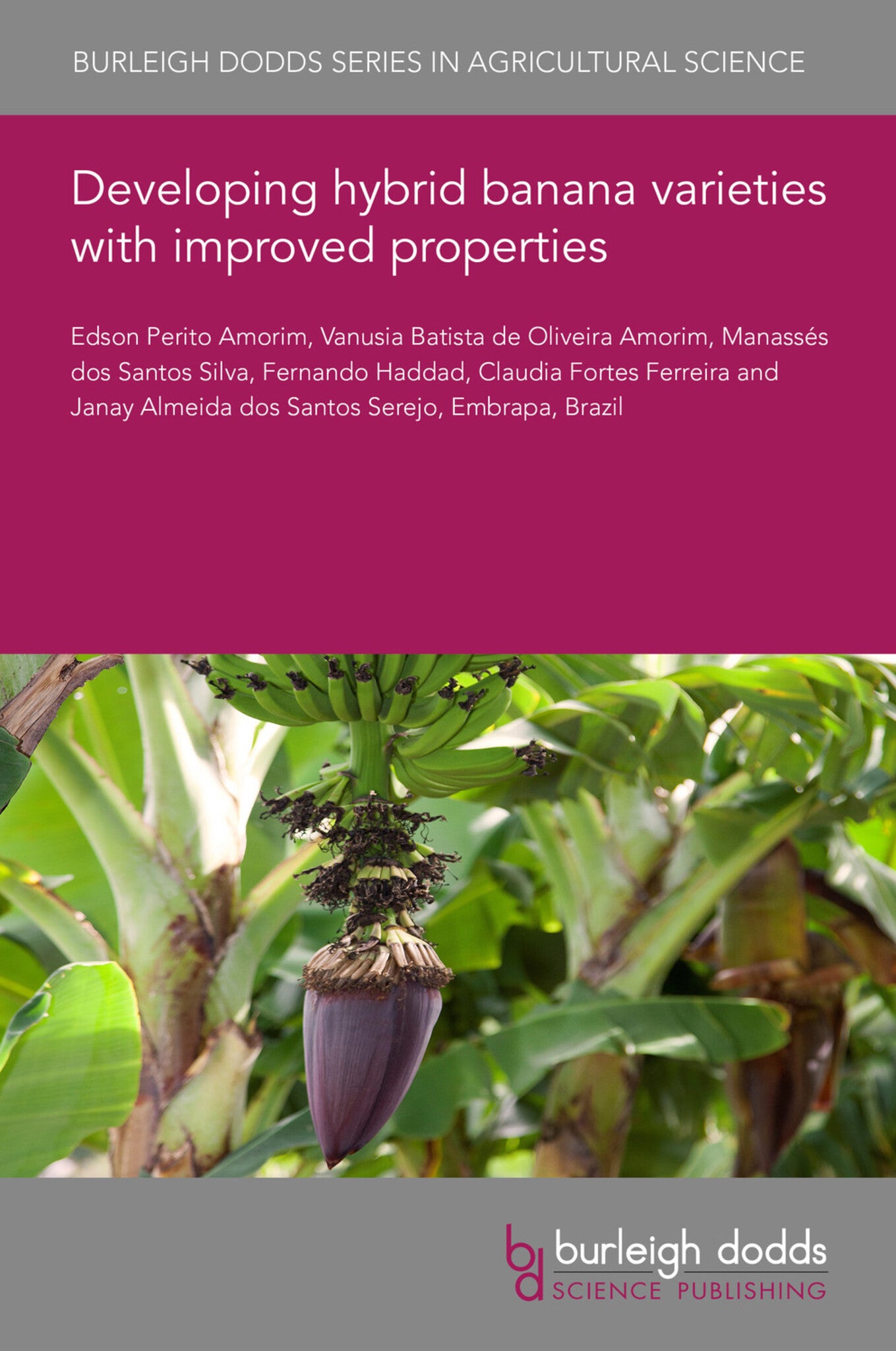We're sorry. An error has occurred
Please cancel or retry.
Developing hybrid banana varieties with improved properties
Dr edson amorim,
Dr vanusia batista de oliveira amorim,
Dr manassés dos santos silva,
Dr fernando haddad,
Dr claudia fortes ferreira,
View More
Janay almeida dos santos serejo
Regular price
£25.00
Sale price
£25.00
Regular price
£25.00
Unit price
/
per
Sale
Sold out
Re-stocking soon
Banana production in Brazil includes different types of cultivars, with the Prata cultivar accounting for 70% of the crop area, followed by the Cavendish, Maçã, and plantain cultivars. In 2019, Bra...
Read More

Some error occured while loading the Quick View. Please close the Quick View and try reloading the page.
Couldn't load pickup availability
- Format:
-
23 November 2020

Banana production in Brazil includes different types of cultivars, with the Prata cultivar accounting for 70% of the crop area, followed by the Cavendish, Maçã, and plantain cultivars. In 2019, Brazil produced approximately 7 million tons of bananas in an area of 465,000 ha, which makes it one of the largest banana-producing countries in the world, together with India, China, and Indonesia. The main challenges of banana production in Brazil include fungal diseases, namely the black Sigatoka and Fusarium wilt race 1. It is worth noting that the Prata cultivars are susceptible to these diseases. Considering that the best strategy to mitigate the effects of these diseases is the use of resistant cultivars, the Brazilian Agricultural Research Corporation (Embrapa) created a program for the genetic improvement of banana production in 1976, which is still in use today.

Price: £25.00
Publisher: Burleigh Dodds Science Publishing
Imprint: Burleigh Dodds Science Publishing
Series: Burleigh Dodds Series in Agricultural Science
Publication Date:
23 November 2020
ISBN: 9781786769480
Format: eBook
BISACs:
SCIENCE / Life Sciences / Horticulture, Commercial horticulture, TECHNOLOGY & ENGINEERING / Agriculture / Sustainable Agriculture, Botany and plant sciences, Sustainable agriculture, Agronomy and crop production

- 1 Introduction
- 2 Released hybrids
- 3 Seeds as the basis of the genetic improvement program of Embrapa
- 4 Improved diploids and their importance in the improvement of Musa spp.
- 5 Phenotyping for resistance to Fusarium wilt race 1
- 6 The Embrapa breeding cycle
- 7 Alternatives to breeding based on crosses
- 8 Future trends and conclusion
- 9 References



